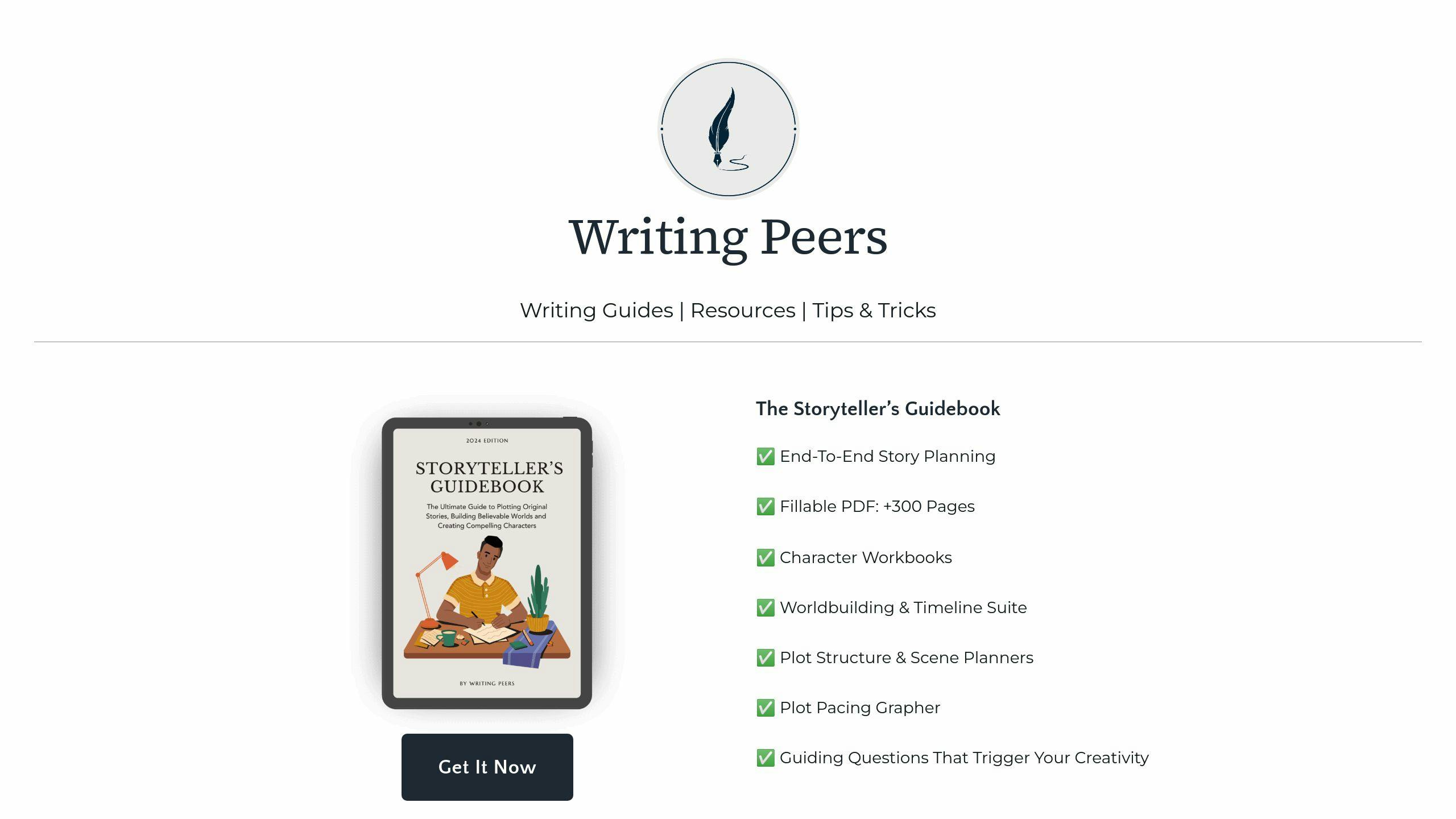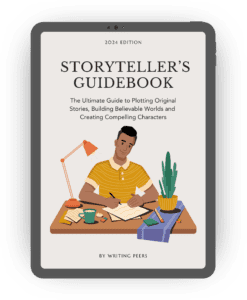15 Character Development Exercises for Fiction Writers
Creating strong, relatable characters is key to engaging stories. This guide provides 15 practical exercises to help writers build realistic personalities, explore emotions, and craft compelling character arcs.
Key Takeaways:
- Understand Characters: Focus on motivations, emotions, and growth.
- Tackle Challenges: Solve issues like shallow personalities or clichés.
- Exercises to Try:
- Full character descriptions and interviews.
- Emotional exploration through key life events.
- Writing moral dilemmas and social interactions.
- Mapping relationships and timelines.
These exercises help you refine your characters and make them feel real to readers. Dive in to bring your fictional personas to life!
How to write interesting characters | Character Development Exercises
Elements of Strong Characters
Creating memorable and relatable characters involves mastering three key aspects that breathe life into your fictional personas. These elements work together to shape characters that truly connect with readers.
Backstory and Motivation
A character’s past plays a crucial role in shaping their present actions and future decisions. A well-thought-out backstory provides insight into the events and experiences that define who they are.
Here are some important factors:
| Component | Purpose | Impact on Character |
|---|---|---|
| Core Beliefs | Shaped by significant events and upbringing | Guides decisions and shapes worldview |
| Relationships | Influenced by family dynamics and past connections | Affects trust and emotional tendencies |
Personality and Emotions
“A distinctive voice for each character is perhaps the most important element to get right in dialogue.” – Reedsy Blog [3]
Characters with emotional depth feel real. Their personalities emerge through how they react to challenges, face internal conflicts, and cope with stress. These traits make them relatable and engaging.
Key traits to focus on include:
- How they consistently respond to obstacles
- Internal struggles that push them to evolve
- Unique ways they deal with pressure or setbacks
Relationships and Interactions
How characters interact with others reveals their true nature. Their behavior in relationships – whether with family, friends, or romantic partners – adds layers to their personality.
Consider these relationship types:
| Relationship Type | Story Impact |
|---|---|
| Family Bonds | Highlight core values and inherited traits |
| Friendships | Showcase personal growth and flexibility |
| Romantic Connections | Expose emotional vulnerability and depth |
These interactions provide opportunities to showcase how characters assert themselves, communicate, and handle conflicts, adding authenticity to their portrayal.
sbb-itb-c17b0a0
15 Character Development Exercises
Now that we’ve gone over the key elements of creating strong characters, let’s jump into some hands-on exercises to bring them to life. These activities tackle challenges like flat emotional depth or unrealistic motivations, helping you create well-rounded and engaging characters.
1: Full Character Description
Build a detailed character profile by including:
| Component | Details to Include |
|---|---|
| Physical Traits | Height, build, unique features, mannerisms |
| Personality | Core values, habits, quirks, speaking style |
| Background | Cultural influences, education, key life experiences |
2: Character Interview
Dive into your character’s psyche by asking questions like:
- What does perfect happiness mean to them?
- What are their biggest fears or regrets?
- What are their deepest aspirations or values?
3: Life Event Timeline
Chronologically map out key moments in their life [2]:
- Childhood events that shaped their perspective
- Major decisions that changed their path
- Relationships that influenced their personality
4: Emotional Exploration
Write scenes that push your character emotionally. These moments could include:
- A personal loss or failure
- An unexpected success
- A moral or ethical conflict
5: Dialogue Practice
“The real trick to character dialogue is using it to give your characters their own definitive voice.” – Scribophile, Writing Effective Dialogue: Advanced Techniques [1]
Create conversations that highlight your character’s unique way of speaking, vocabulary, and communication style.
6: Alternative Perspectives
Rewrite a scene from another character’s point of view. This can reveal hidden traits, behaviors, and how your character impacts others.
7: Moral Dilemmas
Put your character in ethical situations where they must make tough choices. This helps expose their values, thought process, and potential for growth.
8: Character Evolution Stories
Write short stories showing your character at different stages in their life [2]. This will help you track how they change over time.
9: Favorite Media and Hobbies
Detail their interests to reflect their:
- Cultural background
- Personality quirks
- Social interactions
10: Social Interactions
Write scenes where your character navigates various social settings. Pay attention to their comfort level, conversation style, and reactions to others.
11: Real-Life Inspirations
Base your character on observations from real life. As Damon Knight says:
“If you simply invent details at random, you will probably wind up feeling that you really don’t know this character and don’t want to write about her.” [4]
12: Writing Prompts for Characters
Use prompts to uncover more about your character:
- What’s a childhood memory they can’t forget?
- What’s a secret they’ve never shared?
- What’s their greatest fear?
13: Truth or Dare Game
Write a scene where they play truth or dare. This can reveal boundaries, hidden desires, and group dynamics.
14: Drawing or Visualizing the Character
Sketch or describe their physical features, typical expressions, and posture to solidify their image in your mind.
15: Significant Relationships
Create a visual or written map of the relationships that have shaped your character’s growth [2].
These exercises are just the beginning. With these tools, you’ll have a strong starting point for crafting characters that feel real and relatable.
Tools and Resources for Character Development
If you’re looking to bring your characters to life, there are plenty of resources available to help you organize and refine their development. Below are some tools designed to make the process easier and more effective.
| Resource Type | Purpose | Key Features |
|---|---|---|
| Character Workbooks | Organized Creation | Profiles, emotional arcs, relationship maps |
| Story Planning Guides | Plot Alignment | Arc templates, scene planning tools |
| Free Resources | Quick Assistance | Emotion cheatsheets, dialogue tips, beta guides |
The beauty of these tools lies in their flexibility. You can mix and match resources to suit your creative style, adding depth and complexity to your characters.
Writing Peers

Writing Peers offers a wide range of character development tools, including fillable workbooks, plot pacing tools, and templates for worldbuilding. The Storyteller’s Guidebook stands out with features like:
- Fillable character workbooks for tracking traits and growth
- Plot pacing tools to map out character arcs
- Templates for building worlds that shape your characters
- Structured guides for crafting character-driven scenes
Additionally, our free resources cover everything from emotion cheatsheets to dialogue tips, making them a handy reference for writers at any stage.
To get the most out of these tools, set aside dedicated writing time to explore them. For example, use character workbooks to refine your Full Character Description or turn to emotion guides when working on your Emotional Exploration exercise.
Tailor these resources to your writing process, and you’ll be better equipped to create characters that truly connect with readers.
Conclusion: Building Characters
These exercises can help you turn your characters into vivid, relatable figures. By tackling issues like shallow emotional depth or unrealistic motivations, they help your characters feel more real and dynamic, making your stories more engaging.
Start with basic exercises like Character Interviews, and then move on to activities that dive into emotional depth and relationships. Keep in mind, character development takes time and often requires revisiting and refining as your story progresses.
To get the most out of these exercises, consider weaving them into your writing routine:
- Pick exercises that fit your story’s current needs.
- Apply what you learn directly to your manuscript.
- Revisit exercises as your characters grow and change.
Strong characters naturally drive the plot, create meaningful conflicts, and build emotional connections with readers. This is what keeps them hooked.
You can also use tools like workbooks and emotion guides to complement your creative instincts. When combined with your imagination, these exercises can help you create characters that truly resonate with readers.





